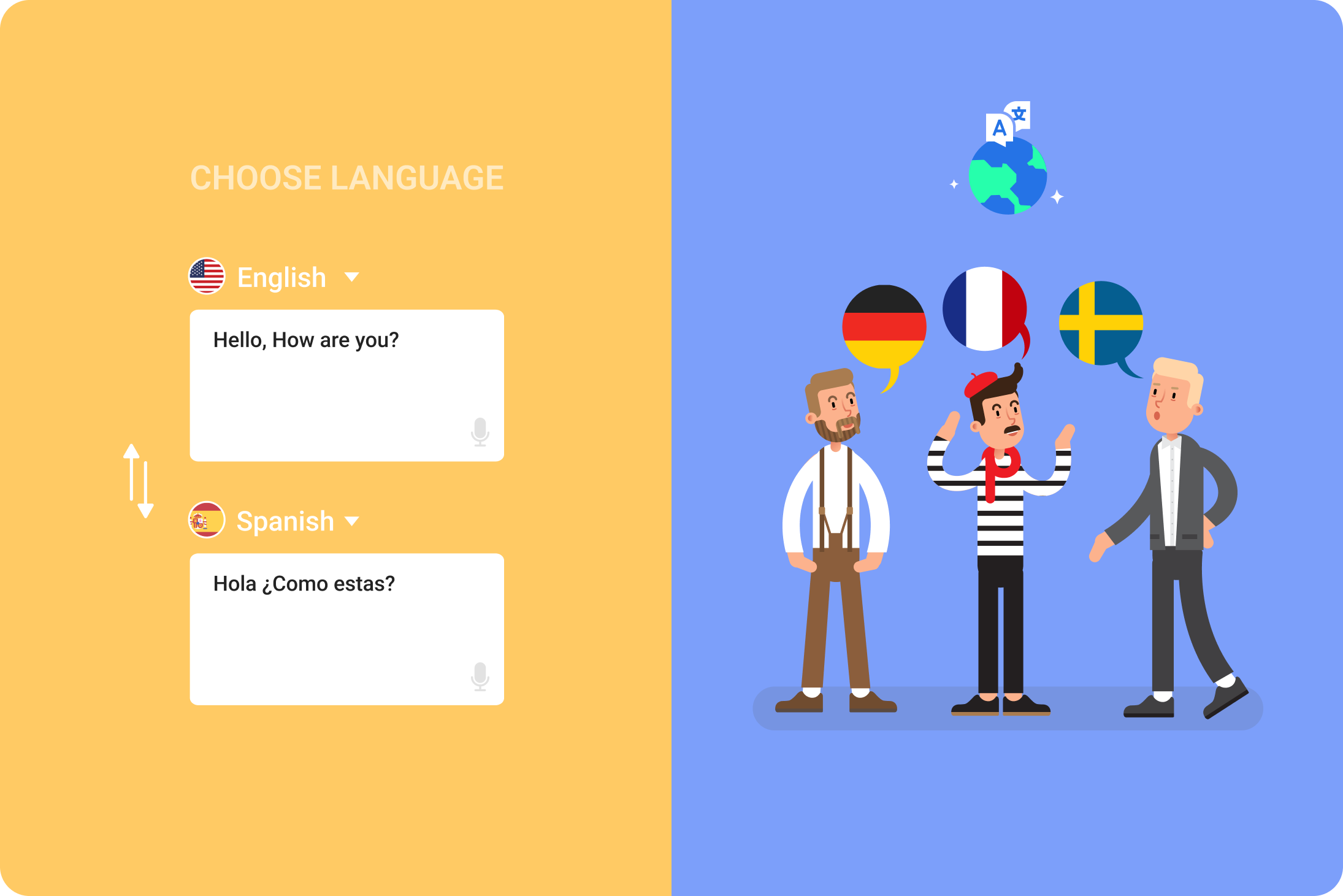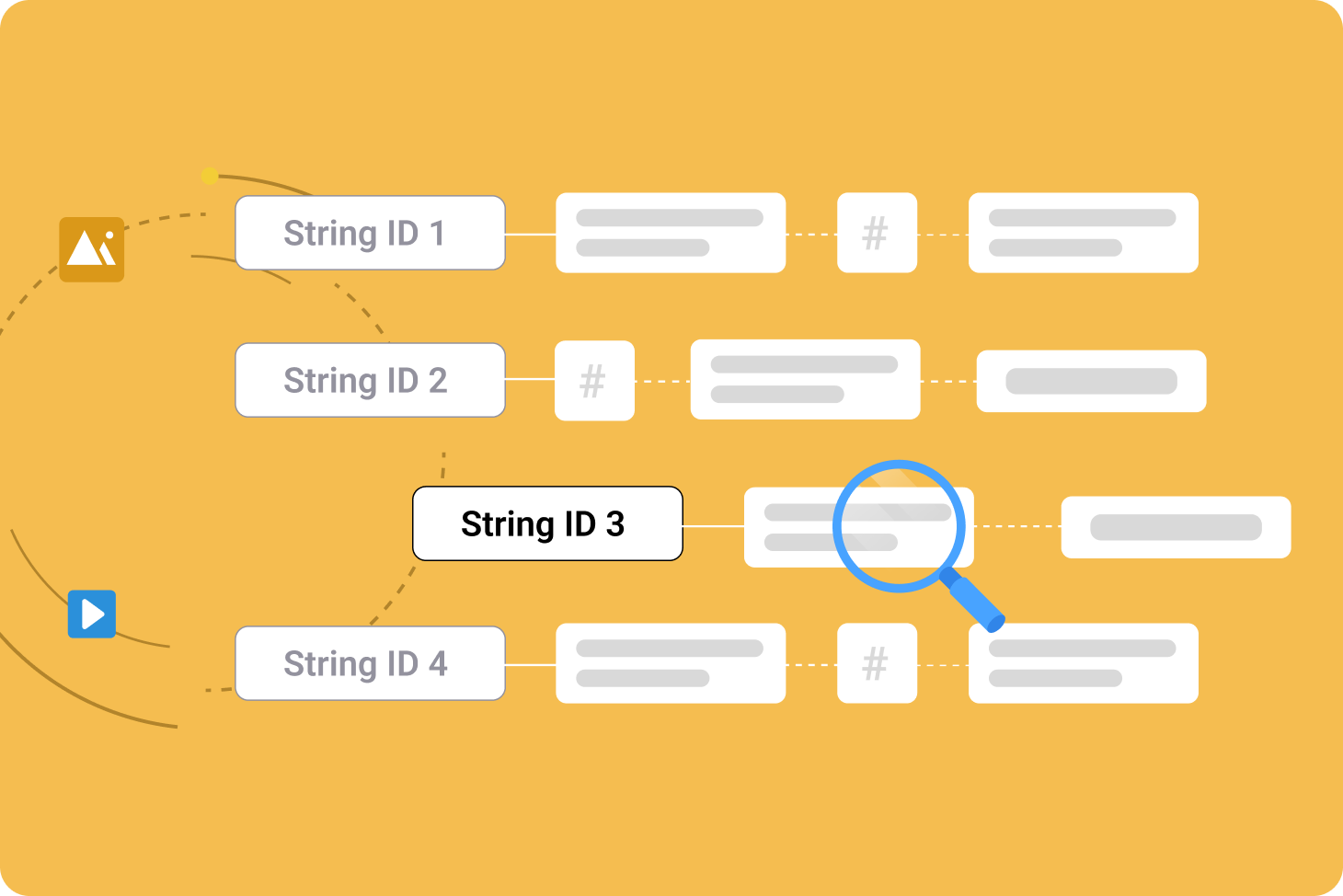What’s the difference between translation and localization?
The difference between translation and localization is that translation renders text from its original source language into one or more target languages, while localization is the comprehensive process of custom-tailoring a text or other media to a specific region, country, and culture.
Translation is just one part of localization. There are so many factors to consider when creating an experience custom-built for a specific audience. That’s why it’s helpful to center your localization process around a content management system that’s been designed from the ground up to make things as effective and efficient as possible.
What is translation?
Translation is when you rewrite text from one language to another while keeping its original meaning the same. The emphasis is on fidelity to the source material by maintaining the format, structure, and wording of the original text.
Translation is a linguistic process, in that the translated work is intended to reflect the original as closely as possible in terms of the way it was written. Translators don’t necessarily factor cultural differences into their work.
What is localization?
Localization is the process of adapting a piece of media to fit a specific cultural context. Whereas translation attempts to stick closely to the source material, localization is all about creating something relevant and understandable to its audience. Preserving the original wording is secondary to the realization of a culturally specific experience.
Localized content is informed by and appeals to the cultural desires, preferences, and expectations of a target market. The same source material localized for two different audiences may seem like near-unrelated pieces of media, depending on how similar or dissimilar their cultures are.
Localization vs translation: which one should I use?
Since translation is about preserving source content and localization deals with adapting content to specific cultural needs, they each have their preferred uses. In general, translation is more appropriate for informative texts, whereas localization is better for creative, emotional, and marketing content.
When to translate
Translation is ideal for situations in which the information conveyed in a piece of content can be understood across cultures.
- Simple emails: Signups, purchase confirmations, and other straightforward emails don’t need to be fully localized — here, translation is sufficient to keep your audience and customers updated.
- Menus: Restaurants in cities with significant populations speaking different languages may struggle with single-language menus. Translating the dish names and descriptions will be usually sufficient to get the point across without worrying about going further.
When to localize
When creating engaging content that does more than simply convey information, you’ll get much better results when creating a unique experience that goes beyond language to meet your audience’s cultural expectations.
- Website content: People in different areas of the world have their own expectations and preferences when it comes to the internet. Make your web experience as intuitive as possible for them.
- Marketing and advertising campaigns: Market-specific localization experts can help you determine the most optimal way to communicate your message to each audience you’re trying to reach. This goes double with any campaigns based on holidays and similar events.
- Narrative content: Dialogue-heavy media are often filled with cultural references, idioms, and other content that may not work when translated directly. Localization writers can ensure this content is rewritten in a way that’s relevant for everyone.
- App design and UX: Not all scripts and lettering systems can be displayed appropriately within the same space constraints. Without allowing for differences in sentence length, character size, or writing direction, you may struggle to fit text strings into their allotted spaces on your layouts.
Factoring linguistic differences like this into your app and UX design process is one of the best ways to optimize your localization process ahead of time.
- Customer success stories: Gather customer stories and testimonials from the same market in which you’ll be using them. This increases your chance of getting relevant feedback to your target audience, from people who likely use your product or service in a similar way.
Where to start with localization?
Localization can seem overwhelming when you’re just beginning. If you’re planning to localize your content, here are a few basic things to get you started. Localizing these seemingly minor bits of information can go a long way towards bridging the gap between you and your audience.
- Spelling differences: Variations on the same language often produce different spellings. For example, spellings like “colour” and “centre” will seem out-of-place for American readers, with the opposite being true for people familiar with British spellings.
- Numbers: Date formats and units of measurements differ across the world, and picking the wrong one can cause confusion.
- Currency and payment methods: Display prices in local currency and let people conveniently pay for your products and services. Europeans don’t typically write checks, while direct bank transfers are uncommon in the United States. Meanwhile, Chinese customers may prefer to pay with AliPay or WeChat.
- Rules and legal requirements: Make sure your content adheres to local regulations. Some countries ban certain topics, while a marketing claim that’s legal in one place may get you in trouble somewhere else.
- Idioms, expressions, and figures of speech: When direct translations won’t make sense, localization can rewrite these tricky phrases into local equivalents. “It’s raining cats and dogs” won’t get you very far if your reader isn’t familiar with the real meaning of that phrase. A localization glossary is a great tool for helping your writers remember how to translate difficult terms.
Localize your content more effectively
The best way to prepare your content for new markets is with a specialized tool that has all the features you need to get the job done right. Gridly is designed from the ground up to manage all your content for localization, all within an intuitive spreadsheet interface.
Create relationships between source and target languages to automatically track content updates, add multimedia content like video and audio files, and eliminate unwanted changes with granular access control. That’s just the beginning of what you can do with Gridly — give it a try for free today.










